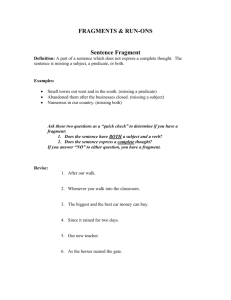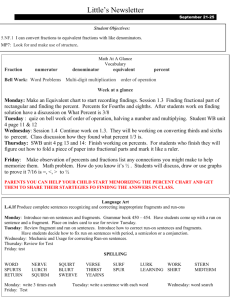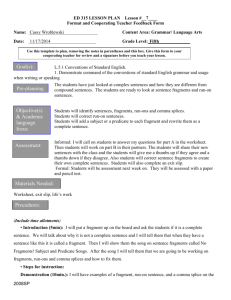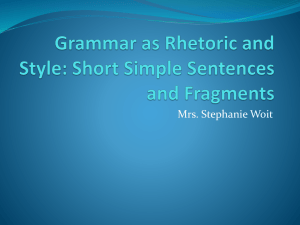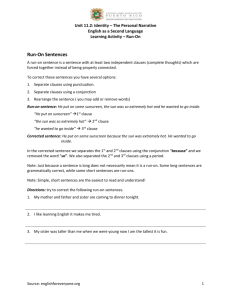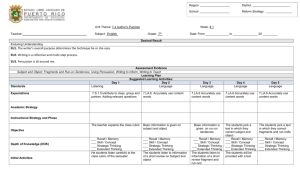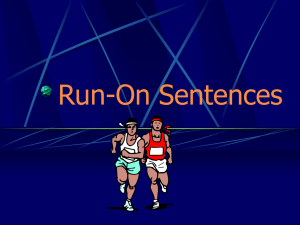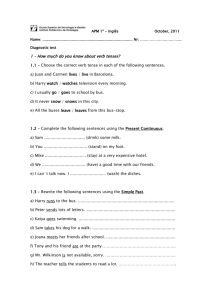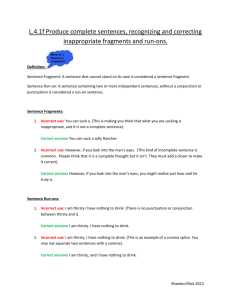Sentence Fragments & Run-ons
advertisement
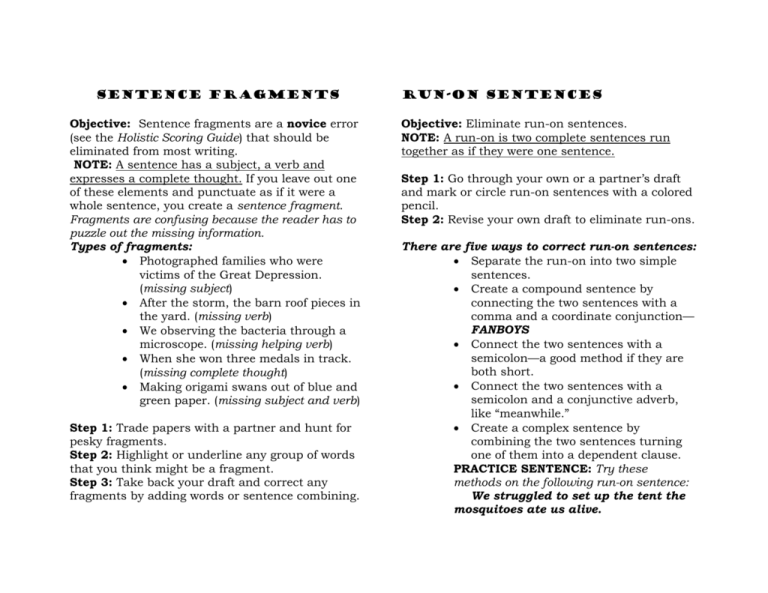
Sentence Fragments Objective: Sentence fragments are a novice error (see the Holistic Scoring Guide) that should be eliminated from most writing. NOTE: A sentence has a subject, a verb and expresses a complete thought. If you leave out one of these elements and punctuate as if it were a whole sentence, you create a sentence fragment. Fragments are confusing because the reader has to puzzle out the missing information. Types of fragments: Photographed families who were victims of the Great Depression. (missing subject) After the storm, the barn roof pieces in the yard. (missing verb) We observing the bacteria through a microscope. (missing helping verb) When she won three medals in track. (missing complete thought) Making origami swans out of blue and green paper. (missing subject and verb) Step 1: Trade papers with a partner and hunt for pesky fragments. Step 2: Highlight or underline any group of words that you think might be a fragment. Step 3: Take back your draft and correct any fragments by adding words or sentence combining. Run-On Sentences Objective: Eliminate run-on sentences. NOTE: A run-on is two complete sentences run together as if they were one sentence. Step 1: Go through your own or a partner’s draft and mark or circle run-on sentences with a colored pencil. Step 2: Revise your own draft to eliminate run-ons. There are five ways to correct run-on sentences: Separate the run-on into two simple sentences. Create a compound sentence by connecting the two sentences with a comma and a coordinate conjunction— FANBOYS Connect the two sentences with a semicolon—a good method if they are both short. Connect the two sentences with a semicolon and a conjunctive adverb, like “meanwhile.” Create a complex sentence by combining the two sentences turning one of them into a dependent clause. PRACTICE SENTENCE: Try these methods on the following run-on sentence: We struggled to set up the tent the mosquitoes ate us alive.
